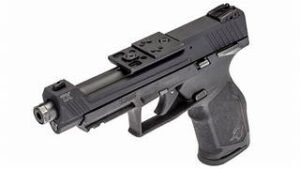In today’s world, home generators have become an essential investment. They play a crucial role in ensuring that our households continue to function seamlessly even when the power goes out. In this article, we will delve into the reasons why home generators are indispensable and provide insights into the best options for power outages.

Types of Home Generators
Portable Generators
Portable home generators are popular for homeowners looking for a temporary solution during power outages. Their flexibility and versatility make them a top pick. Portable home generators are easy to move and can be transported to various locations around your property or even on camping trips. They come with built-in handles or wheels for effortless maneuverability.
One key advantage of portable home generators is their various fuel options, including gasoline, propane, and diesel. Each has benefits, such as gasoline’s wide availability, propane’s clean combustion, and diesel’s fuel efficiency and durability.
The power output of portable generators varies, ranging from as low as 1,000 watts for basic appliances to over 10,000 watts for running multiple essential appliances simultaneously.
Standby Generators
Standby generators provide a reliable, long-term solution for extended power outages. Unlike portable generators that require manual setup, standby generators are permanently installed outside the home, similar to an air conditioning unit. They automatically sense power loss and kick in without any human intervention.
Standby generators are typically connected to the house’s main electrical panel, enabling them to power all essential circuits or even the entire home, depending on their capacity. However, it’s essential to consider professional installation, proper placement, and fuel source availability.
Automatic Transfer Switch (ATS) Functionality
The Automatic Transfer Switch (ATS) is an integral part of standby generator systems. This device monitors the power supply from the utility grid and seamlessly transfers it to generator power during an outage. It ensures a smooth transition, protecting sensitive electronics and enabling homeowners to prioritize circuits and prevent overload.
Factors to Consider when Choosing a Home Generator
Power Requirements Assessment: Start by identifying essential appliances and their wattage ratings. Calculate the total wattage needed, considering future power needs.
Noise Levels and Location: Consider the noise generated by the generator and place it away from living areas. Enclosures and sound-absorbing materials can help reduce noise.
Fuel Availability and Storage: Evaluate your chosen generator type’s fuel availability and storage requirements. Consider shelf life and regulations.
Maintenance Needs and Costs: Factor in maintenance requirements, including oil changes, filter replacements, and warranties or service agreements.
Sizing a Home Generator for Optimal Performance
Selecting the right-sized home generator is crucial to ensure optimal performance when the lights go out. It’s not just about the generator’s capacity but also understanding your specific power requirements, especially for motor-driven devices with unique demands.
Motor-driven appliances like air conditioners, refrigerators, well pumps, and certain power tools require extra power during startup, known as surge capacity. This surge is higher than their regular operating wattage and needs to be accounted for. To accurately size your home generator:
Identify Your Appliances: List all the appliances you want to power during an outage, including their wattage ratings. Check labels or user manuals for this information.
Calculate Total Wattage: Calculate the total wattage by adding up the running wattage of all appliances and accounting for the surge wattage during startup. This ensures you have sufficient power to handle these appliances without overloading the generator.
Consider Surge Capacity: For appliances with high startup demands, like air conditioners, it’s advisable to choose a home generator with a surge capacity that’s at least 25% higher than their estimated starting wattage. This prevents overloading and ensures efficient performance.
By accurately assessing your power needs and understanding surge capacity, you can choose a home generator that matches your requirements, keeping your household running smoothly during power outages.
Safety Measures When Operating Home Generators
Safety should always be a top priority when using home generators. Here are essential safety measures to keep in mind:
Proper Grounding
Ensuring your home generators are properly grounded is paramount. Grounding provides a safe path for electrical current in case of malfunction or surges. To establish effective grounding:
- Use a copper grounding rod installed outside your home and connect it to the generator’s grounding terminal with copper wire.
- Maintain a minimum distance of 15 feet from any water sources to mitigate the risk of electrocution.
- Regularly inspect and tighten connections between the generator and the grounding system for optimal safety.
Ventilation for Carbon Monoxide Prevention
Carbon monoxide (CO) poisoning is a significant concern when operating generators indoors or in partially enclosed spaces. To prevent CO buildup:
- Whenever possible, operate your generator outdoors in an open space to allow exhaust fumes to disperse.
- Position the generator at least 20 feet away from doors, windows, or vents that could let exhaust gases indoors.
- Ensure proper ventilation in the room where the generator is running, such as opening windows and using fans to circulate fresh air.
Fire Prevention Measures
Home generators operation requires careful attention to fire safety:
- Store generator fuel in approved containers in a cool, well-ventilated area away from ignition sources.
- Maintain a minimum clearance of three feet around the generator, free from flammable materials like dry leaves or wood piles.
- Keep functional fire extinguishers near the generator and throughout your home.
By following these safety guidelines, you can enjoy the benefits of your home generator without compromising your well-being or property.
Choosing the Right Transfer Switch for Standby Generators
Selecting the appropriate transfer switch for your standby generator is crucial for seamless operation during power outages. There are two main types to consider, each with its characteristics:
Manual Transfer Switch
- This type requires manual intervention. You need to start the generator and physically switch the power source from utility to generator.
- Manual transfer switches are simpler and more affordable.
- They offer control over when to switch between power sources.
- However, they require your presence during outages and careful management.
Automatic Transfer Switch (ATS)
- ATS provides automatic, hands-free operation. It monitors your utility’s power supply and signals the generator to start when an outage is detected.
- It seamlessly switches between utility and generator power without your intervention.
- ATS can integrate advanced features like load management systems to prioritize power allocation.
- Although more convenient, ATS units are typically costlier than manual switches.
To choose the right transfer switch:
- Assess your needs, budget, and level of convenience required.
- Consult a professional electrician who can recommend the most suitable option for your home’s backup power requirements.
Tips for Maintaining Your Home Generator System
Proper maintenance ensures the longevity and reliability of your home generators. Here’s a checklist for regular inspections:
- Visually inspect the generator for leaks, loose connections, or corroded parts.
- Check fuel lines, tanks, and the battery for damage or deterioration.
- For proper functionality, examine cables, wires, control panels, switches, and circuit breakers.
- Ensure all safety features like emergency shut-off switches are in working order.
Regular oil changes and air filter replacements are essential for the engine’s health. Refer to your generator’s manual for specific intervals based on usage and conditions. Also, under a moderate load, exercise your generator for 10-15 minutes monthly to keep it in prime condition. Following this maintenance routine and promptly addressing any issues, you’ll ensure your home generator is always ready to provide reliable power during outages.
Environmental Considerations with Home Generators
Environmental consciousness is becoming increasingly important. Here are some considerations:
Eco-Friendly Options: Solar-Powered Generators
- Solar-powered generators harness the sun’s energy to generate electricity, offering a sustainable and renewable energy source.
- They produce zero emissions, reduce carbon footprint, and operate silently.
- Solar generators are ideal for environmentally conscious individuals seeking clean, quiet backup power.
Noise Reduction Techniques
- Many generators can be noisy. Use sound baffles or enclosures to reduce noise levels significantly.
- Anti-vibration mounts or pads dampen vibrations produced by the engine, further reducing noise.
- Manufacturers are designing quieter generators with advanced mufflers and insulation materials.
By exploring eco-friendly options and employing noise reduction techniques, you can minimize your environmental impact and enjoy a quieter, more sustainable power solution. With these considerations, your home generators will provide reliable backup power and align with your environmental and safety priorities.
Conclusion
In conclusion, home generators have evolved into indispensable assets in our modern lives. With the increasing frequency of power outages, having a reliable backup power source is no longer a luxury but a necessity. Whether you opt for a versatile portable generator or a standby generator for seamless, automated operation, the key is to be prepared for the unexpected.



